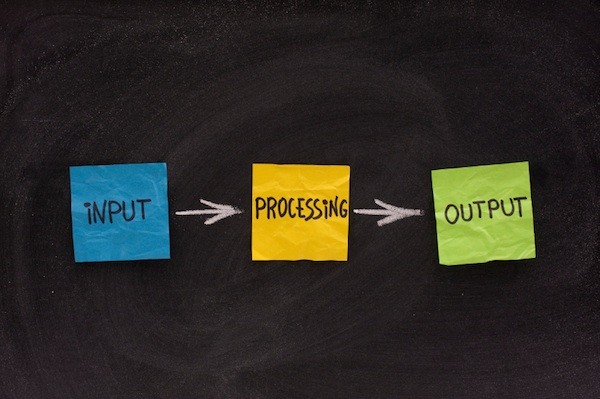We get a lot of requests for providing benchmarks. In most cases it is for hourly rates. “How much does an Account Director cost per hour?” “How much for a Creative Director as opposed to an Executive Creative Director?” I have written previously on the short-coming of rate only benchmarking.
The real interest for me personally and one that we have been developing and using for more than a decade is resource benchmarks. This gives us the ability to answer questions like “What should it cost to develop and produce a television concept?” This provides a future facing view of your agency cost and the investment level required to deliver the scope or schedule of work.
But using these benchmarks, both the resource benchmarks and the resource costs or hourly rate benchmarks you can calculate the historical efficiency of the current agency / marketer relationship. That is “How efficiently am I delivering the scope or schedule of work?”
How does this work?
This is our Agency Remuneration Assessment process. We undertake between 30 and 50 of these each year across all different agency types (Creative, Media, Digital, PR, Direct, CRM etc) and a wide range of advertiser categories (Automotive, Financial Services, Telecommunications, FMCG, Consumer Goods, Retail, etc).
The resource benchmarks are customised to these various advertiser categories and the cost benchmarks are customised to reflect the size and type of agency and the type of advertiser arrangement.
The process starts with agreeing the scope of the benchmarking project.
This includes:
- The brands and agencies to be included – multiple brands and brand teams with the one agency allows us to compare efficiencies
- The historical period to be reviewed – this is dependent on any peaks and troughs in workload to ensure a representative period
Once this is agreed, it is simply a matter of obtaining the current agency contract and then meeting with the agency to brief them on the information required. We obtain the data from the agency and not the advertiser as the agency is more likely to have captured information on resource use and a breakdown of spend by retainer / fees / production and the like.
The data we collect from the agency by template:
- The agency resource used
- The outputs of deliverables of the relationship
- The agency income
- The agency rate card
From this data and our resource and cost benchmarks we are able to calculate:
- The resource levels required by discipline to deliver the outputs
- The mix of resources across the disciplines
- The profitability of the account for the agency
How to measure efficiency
Using the scope of work delivered by the agency we use the resource benchmarks to calculate the level and mix of resources typically required across:
- Management
- Account management
- Creative
- Strategy
- Technology
- Production
By comparing the level of resources calculated against the actual resource reported by the agency, you get an indications of the level of efficiency.
| Benchmark is HIGHER than actual | High efficiency |
| Benchmark is the SAME as actual | Expected efficiency |
| Benchmark is LOWER than actual | Low efficiency |
The variations in the resource level by discipline also provides insights into the cause of the inefficiency.
| Higher account management hours | Inefficiencies in the management process including WIP, meetings etc |
| Higher strategy hours | Inefficiency in the brand strategy process, indicative of a poorly developed strategy |
| Higher creative hours | Inefficiency in briefings and approval process requiring multiple iterations |
How efficient is your agency relationship?
While increasingly we are using the resource and cost benchmarks to calculate the costs going forward, it continues to play an important role in determining efficiency and diagnosing the cause.
Prior to undertaking the benchmarking process, we often find that both marketers and agency will provide thoughts and theories on possible causes of any inefficiency we may find. Often these are only useful once we have run the benchmark numbers. Numbers do not lie.
But the benchmark process provides a financial foundation, including the cost of inefficiencies. It also becomes the basis for correcting the processes and using remuneration to encourage improved efficiency.
So how efficient are your agency relationships?




